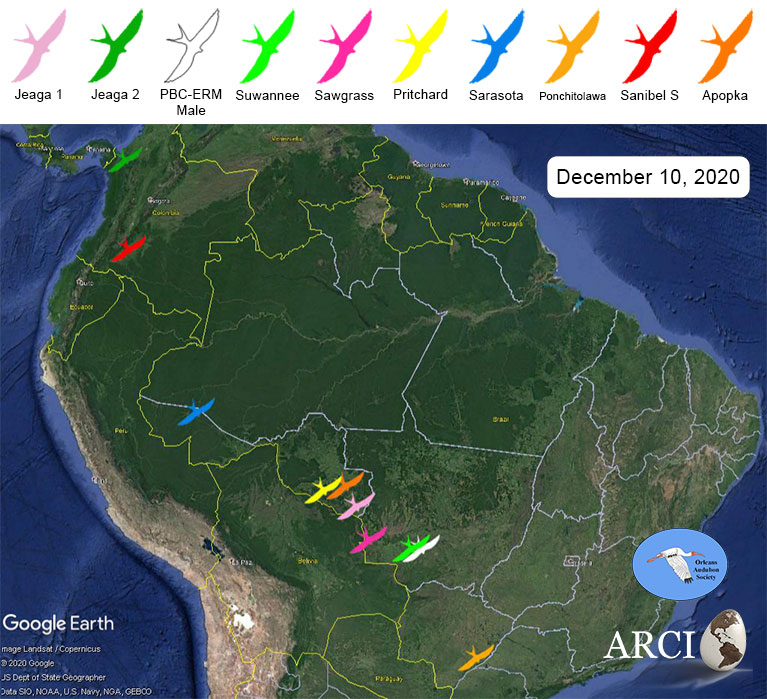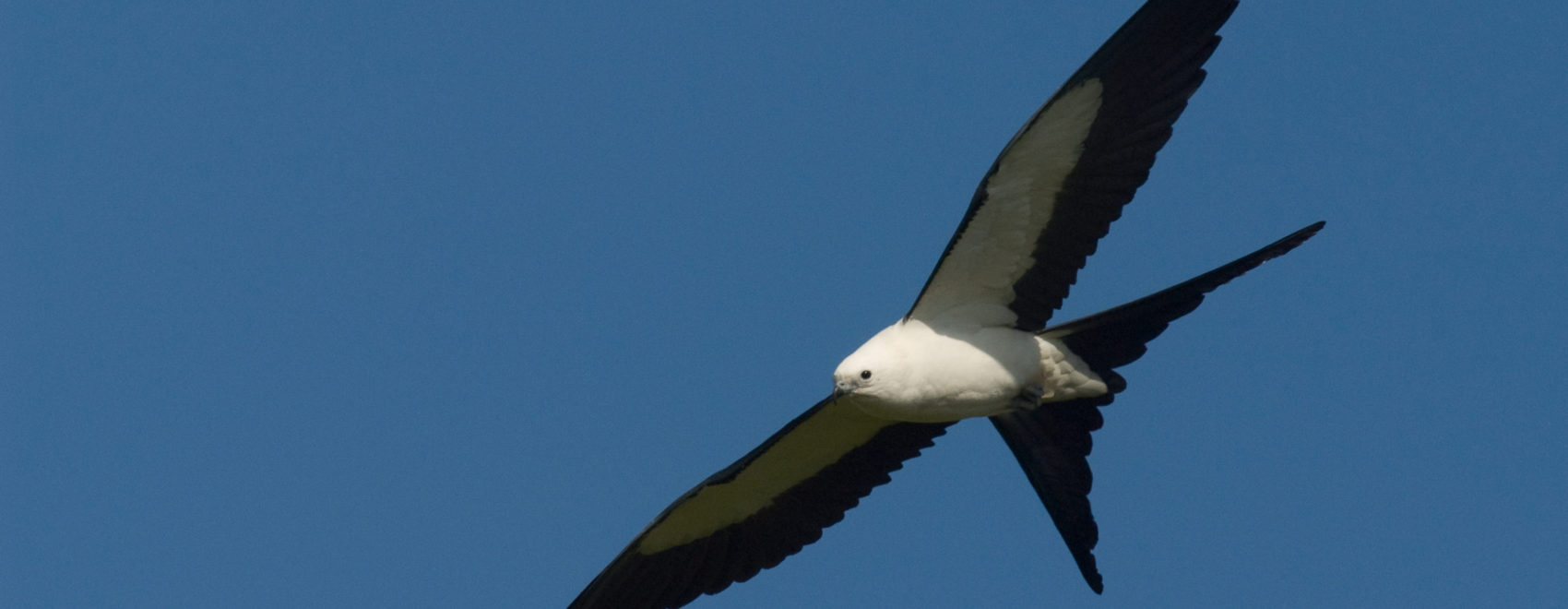
It is our pleasure to share our Swallow-tailed Kite research with you. As our GPS-tracked kites check in from their winter activity areas we are reminded of the long and uncertain migratory path they take each year, TWICE! Will their favorite roost tree be there? Will there be enough insects to feed them? Have fire, drought, floods, or land clearing changed the landscape along the route? Some conditions may have changed since they last were there.
**Side note: ARCI has a new look on a new website that now host all our blogs. The old “Blogger” site will still hold our past blogs, but all new content will be right here. Thank you for being a follower and reading on.
As in past years, the GSM/cellular data uploads from Swallow-tailed Kites on their winter range and throughout migration can be spotty due to lack of coverage in remote areas. We sometimes go months without receiving data uploads, and we wait patiently on the edge of our seats for those “missing” birds to reach cell coverage and upload data once again.
Our southernmost Swallow-tailed Kite is Ponchitolawa, tagged by our colleague Dr. Jennifer Coulson in Louisiana. He has been south of the city of Campo Grande in the state of Mato Grosso do Sul, Brazil since early November. Ponchitolawa is the only kite presently tracked via satellite, thus we receive regular data uploads despite his remote locations.
Two kites, PBC-ERM Male and Suwannee are sharing the same roost site! This roost is in an area northwest of the city of Cuiabá in the state of Mato Grosso, Brazil. Suwannee had been using the area since 23 November and PBC-ERM Male arrived on 27 November. In Florida, they breed 240 miles away from each other in Levy and Palm Beach counties and now they have found the SAME roosting area 5,000 miles away! Can you imagine how many other Swallow-tailed Kites are with them?
Also in Mato Grosso, Brazil, 180 miles west of Suwannee and PBC-ERM Male is Sawgrass. Sawgrass is our longest-tracked Swallow-tailed Kite carrying GSM technology. Her transmitter is archiving data longer than expected, and we are thrilled that she is doing so well on her 4th recorded southbound migration.
In the state of Rondônia, Brazil, Jeaga #1 has settled into the southeastern section of the state while Pritchard and Apopka are 100 miles north of her. Pritchard last uploaded data at the end of September and we hope this is because he is out of cell service and will upload his data soon. Apopka recently arrived at the same location where Pritchard’s last location was a few months ago. We are fortunate to have this tracking data to identify these commonly used locations throughout the kites’ annual cycle.
Three other Swallow-tailed Kites have been out of cell range for a few months; Suwannee last checked in from Acre, Brazil and both Sanibel South and Jeaga #2 last uploaded data in Colombia. We anxiously await their data uploads to find out where they have traveled. Until then, we wish them and all migratory birds safe travels.
Audubon Center for Birds of Prey
bioGraphic
Caloosa Bird Club
Clearwater Audubon Society
CROW – Clinic for the Rehabilitation of Wildlife, Inc.
Florida Panther National Wildlife Refuge
Friends of Palmetto Bluff Conservancy
Friends of the Carlton Reserve
Friends of the Florida Panther Refuge
Friends of the Lower Suwannee & Cedar Keys National Wildlife Refuges
Halifax River Audubon
Jacksonville Zoo and Garden
Lower Suwannee National Wildlife Refuge
National Audubon Society
Oklawaha Valley Audubon Society
Orange Audubon Society
Orleans Audubon Society
Palm Beach County Department of Environmental Resources Management
Palm Beach Zoo and Conservation Society
Palmetto Bluff Conservancy
Peace River Audubon Society
Sanibel-Captiva Audubon Society
Sanibel-Captiva Conservation Foundation SCCF
Sarasota Audubon Society
Seminole Audubon Society
St. Augustine Alligator Farm Zoological Park
St. Petersburg Audubon Society
Sunrise Wildlife Rehabilitation
The Avian Reconditioning Center for Birds of Prey
Venice Area Audubon Society
West Volusia Audubon


Forgive me for perhaps not reaching out sooner. About 5 years ago, my brother noticed a strange bird drifting above our home in East Brewton, Alabama, about an hour north of Pensacola. He searched and found the Swallow Tailed Kitr to closely resemble the bird he saw. He described it as black but gave a dark blue hue in the sunlight.
Over the years I too have seen the bird. In fact, we actually saw two perhaps in a mating courtship as they were witnessed diving and playing mid flight. Our interest grew to notify others of the sightings as our high school (W S Neal) mascot is/are the Blue Eagles and wondered if this bird could have been the origin of that selection.
Mostly just a single bird sighting, it always approaches our home from the north in the proximity of Murder/ Cedar Creeks as our area is home to large tracts of pine.
Hope this is of interest to you. Feel free to reply if we can be of further assistance. It’s a magnificent bird.
Great sighting Mr. Brackin! Thank you for sharing this story. I hope the kites continue to use your area. Sounds like they may have nested there in past years. That is very exciting. There are breeding records in Alabama, but I do not know much about the distribution of Kites there. Keep us posted on what you see this coming year.
Best,
Gina Kent
ARCI
Im in Thibodaux Louisiana, and I have seen a swallow tail kite on numerous occasions. Its a beautiful bird and every time I see it im just mesmerized and I watch until it leaves. It hovers over the trees out in back, circles a few times and leaves. I don’t know if its endangered but there is 1 here